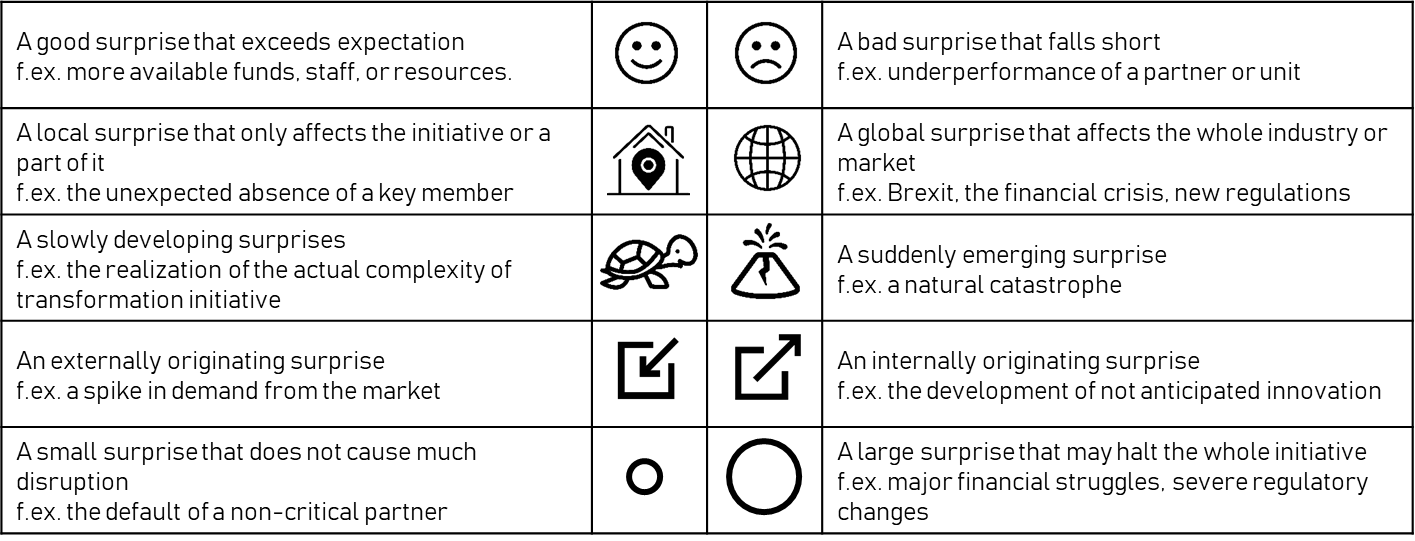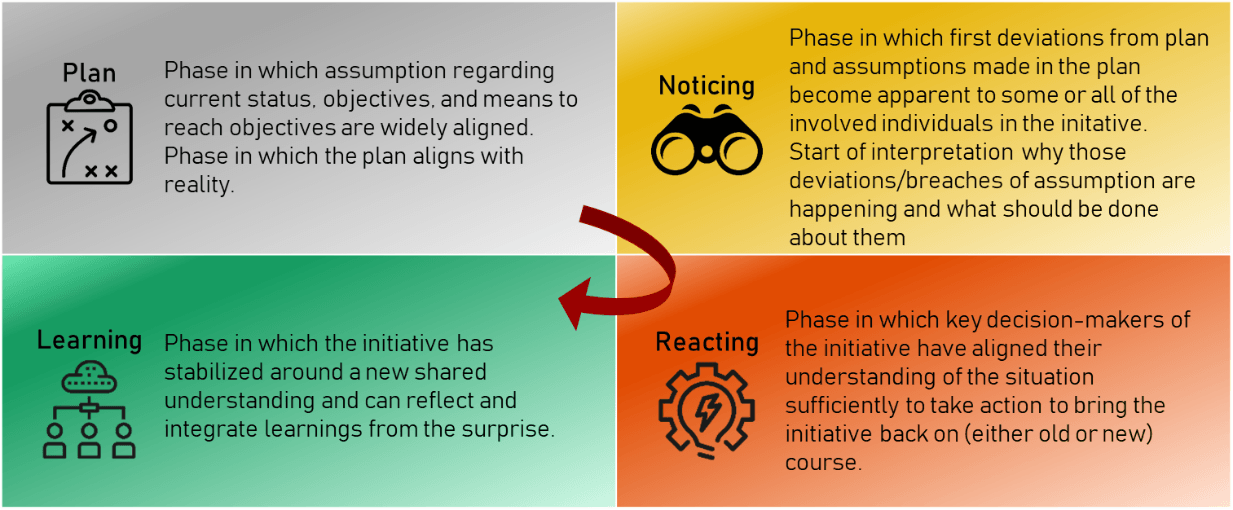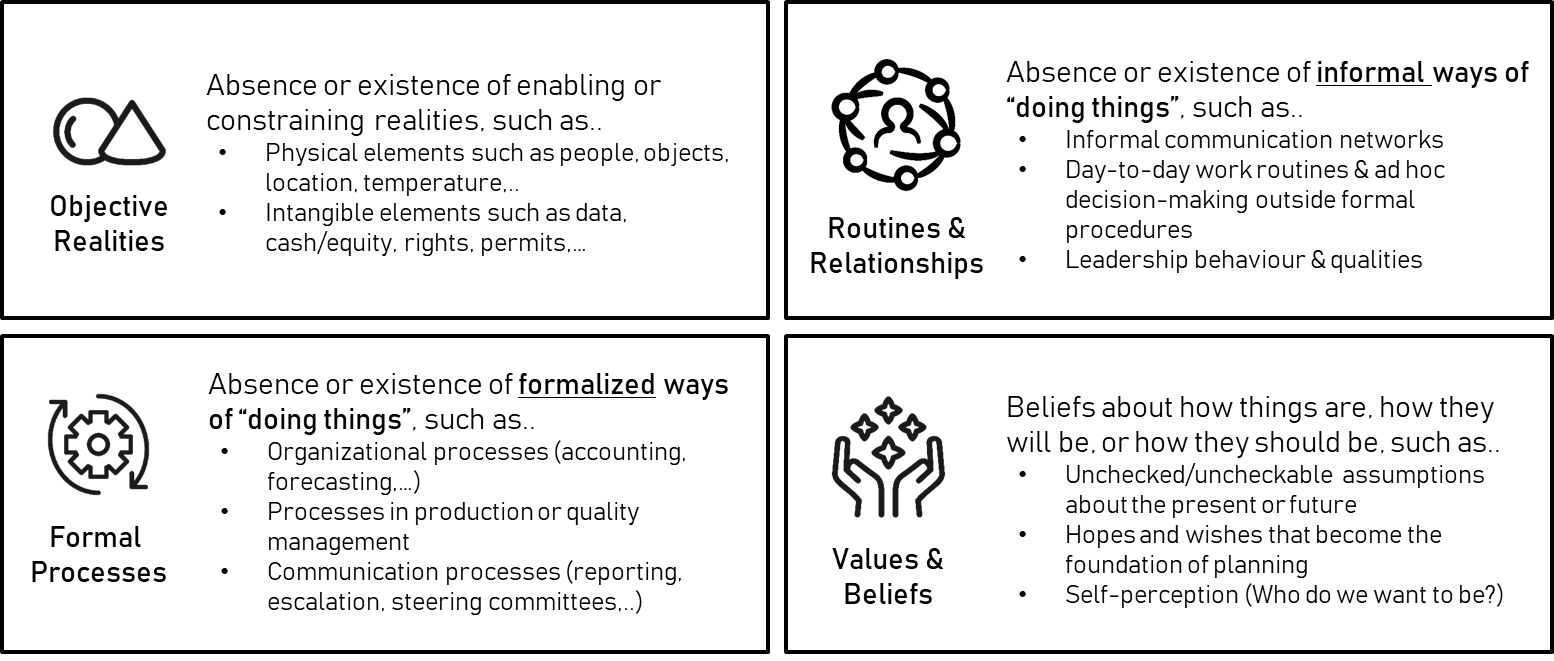Research Highlight – Workshops on better managing surprises in strategy implementation
Brightline and the Technical University of Denmark (DTU) are currently working with teams of senior managers to fine-tune and validate a set of workshop tools that allows strategy professionals to understand how their organization manages surprises in strategy implementation and transformation initiatives.

This article is based on research carried out at the engineering systems division of the Technical University of Denmark - DTU and supported by Brightline Initiative.
By Josef Oehmen and Verena Stingl
The Brightline Initiative delivers insights and solutions that empower leaders to successfully transform their organization’s vision into reality through strategic initiative management. Brightline sponsors and supports a range of cutting edge research activities, including partnerships with MIT-CEPE, Duke Corporate Education, Insper, IESE Business School, University of Tokyo Global Teamwork Lab, Blockchain Research Institute, and DTU.
The team at the Technical University of Denmark, Dr. Verena Stingl and Prof. Dr. Josef Oehmen, this year focus on developing tools that help executives to better deal with uncertainties and surprises in the implementation of strategy initiatives.
Read more about crises and surprises in strategy implementation in their article for the London School of Economics Business Review.
They are currently working with teams of senior managers to fine-tune and validate a set of workshop tools that allows strategy professionals to understand how their organization manages surprises in strategy implementation and transformation initiatives. “All elements of the workshops are based on models and best practices published in the management literature, for example on crisis management, risk management, but also leadership and co-creation. However, it requires a lot of hands-on testing with actual executives and practitioners to figure out what elements make the most sense in real life, and what the best way is to turn the workshop insights into actionable results”, says Prof. Josef Oehmen, the principal investigator on the project.
The workshop being developed takes the executives through several steps:
1. Understanding the “surprises landscape” in their organization
Surprises are events and developments by which organizations are blindsided. However, where surprises come from can be very different from organization to organization. Understanding where the main surprises in an organization come from is essential to focus attention and resources most effectively.
The following characteristics can help you understand your own surprise landscape better:
- Are you more often surprised by exceeding expectations or by falling short of expectations? Consider whether you might be too optimistic or too pessimistic in your expectations!
- Do your surprises have only local effects or do they affect the whole industry or market? If the latter, how can you create an advantage in anticipating and handling these surprises better?
- Are your surprises slowly emerging or suddenly coming out of nowhere? Slowly emerging surprises often have many early signals that you can try to anticipate earlier.
- Are your surprises home-made or coming from outside? What options do you have to reduce unwanted home-made surprises, or foster more pleasant surprises, such as innovation?
- Are your surprises a few big ones or many small ones? Organizations tend to overlook the small surprises – but they can accumulate to one big problem!

2. Understanding the strengths and weaknesses of the organization in managing surprises
All surprises follow the same basic storyline: First, everything seems fine, then a few signs pop up that something has gone off course, and suddenly we are in full response. Hopefully, once the surprise had been handled, we have learned something. The workshop calls these phases “planning”, “noticing”, “responding” and “learning”.
Organizations have different strength and weaknesses in these phases – the workshops help to identify which of the phases you currently master well and where you could improve your abilities. For example, many organizations stretch their noticing phase overly long as the information is not efficiently communicated, negative signs are downplayed, or signals are simply misinterpreted. Other organizations struggle to identify efficient responses or solutions for the surprise and thereby aggravate the effect of a negative surprise or miss to seize an opportunity. Finally, some organizations apparently never learn and are surprised by the same things over and over again.

3. Where do these strengths and weaknesses come from?
The workshop then drills down into the root causes of the identified strength and weaknesses, to formulate strategies for improving surprise management. This is the most challenging part of the workshop in which participants engage in an honest exploration of enablers and blockers in their surprise management.
A typical finding relates to a painful truth: the biggest blockers to noticing and responding to surprises are not physical, objectives barriers, but the processes, routines and beliefs that an organization builds up. Often, crucial information is available in the organization, but not where it is needed: hierarchies, unsuitable reporting structures, lack of trust, or simply an information-relay that does not trust the source can break down the communication. Similarly, the search for a solution may be slowed down by approval processes, focus on roots of the problem rather than the solution, ignorance of input from the factory floor, and many other reasons.
On the other hand, enablers relate to trusted relationship, empowerment of decision-makers below the C-level, a shared understanding of goal and purpose across the organization, or multiple layers of communication within the organization.

4. Development of an action plan
The workshops lead to three types of actions: Strengthening already successful practices, closing identified gaps, and stopping counterproductive behavior. “One important early result is that noticing and acknowledging that a surprise has occurred is, no pun intended, surprisingly difficult for organizations and takes a long time. If we look at how surprises unfold, this is the phase where we see a lot of delays and conflict potential accumulate. One of the key question for executives becomes: ‘How can we quicker notice – and agree – that a surprise has occurred and our plans must change?`”, says Josef Oehmen.
The work at DTU on this topic continues for the rest of the year. The findings, including workshop material, will be published through Brightline.org.
Verena Stingl is a postdoctoral researcher at the Technical University of Denmark (DTU), Engineering Systems Group. Her research interests concern human cognition and behaviour in highly uncertain business environments, such as projects and strategy initiatives.
Josef Oehmen is an associate professor at the Technical University of Denmark (DTU), Engineering Systems Group. His research interests focus on managing large-scale (systems) engineering programs, particularly on the application of risk management, lean management and the associated organisational strategy processes. He is the founder and coordinator of the DTU RiskLab.